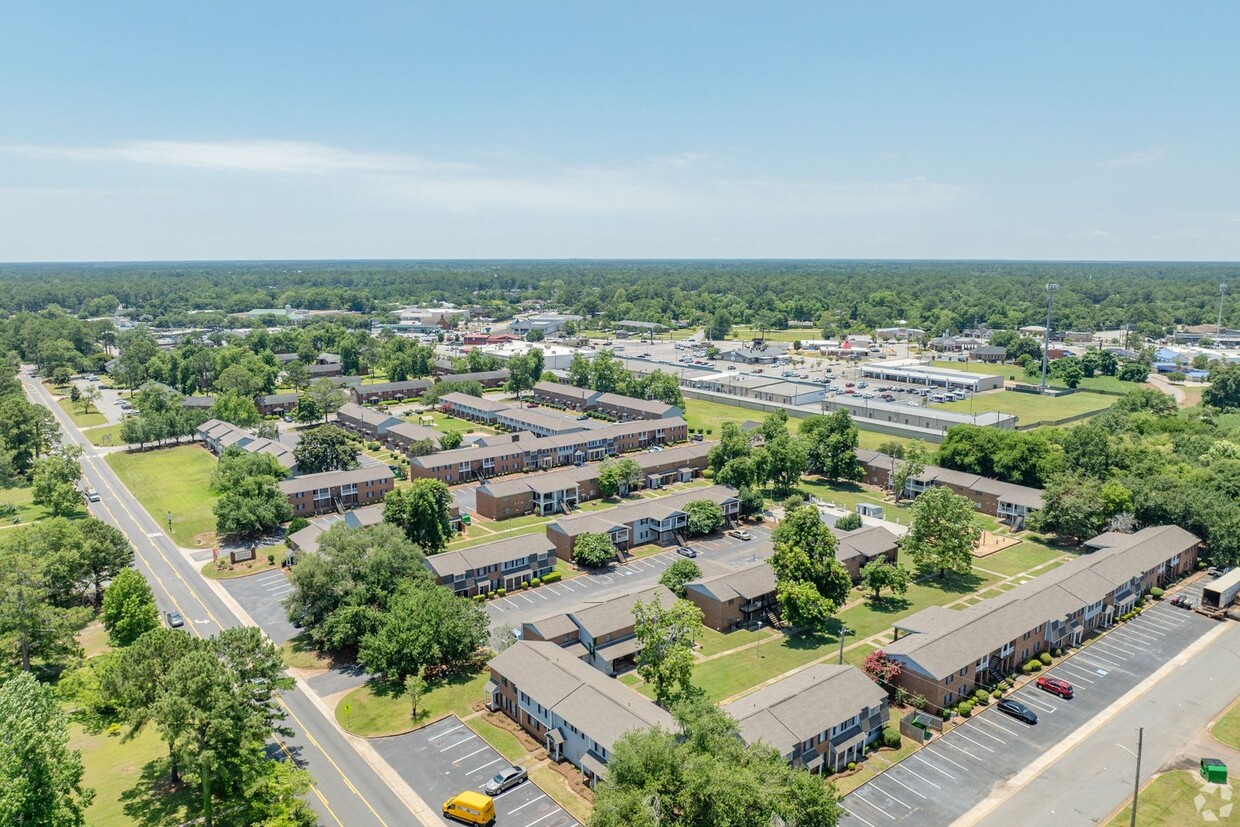Multifamily Market Update + Where to Find Deals NOW Part 3
Multifamily Market Update + Where to Find Deals NOW Part 3
In Part 2 – We played devil’s advocate for one second and we thought the push back you’ll get is that the math just doesn’t work with multi family investments. You can underwrite it at that lower point to keep the rents lower and the pushback of those investors, wont even bother because, if the risk free rate has given a 5% return, they’re going to tell me that I have to go buy this building, put this money in, and then ultimately keep the rents steady, while my insurance expenses are going through the roof as your property gets reassessed at a higher price point and your taxes are higher. Now that’s playing a little bit of a devil’s advocate
As investors we have been guilty of buying an old apartment and having it cost much, much more than expected to renovate it. So there does need to be some kind of tax credit or something for investors who are willing to take that risk because as a developer, I know others that are sitting in projects in Utah, and was offered 30% affordable housing but as inflation hit, they began to take on major losses, and it cost them twice as much to build the affordable units as they could sell them for. So it shouldn’t be the investor that takes the hit. There should be a tax credit of some kind to off set these losses .
We do think that investors get vilified in the media a little bit, the developers, they do as well – wrongfully. We don’t think enough people are following the expense side of the equation. Most see a10 to 20% rent growth, but they don’t see insurance costs have gone up 40, 50% in the same time span as well as management costs and building materials.. Again, we are not about to say go cry a river for all of all of the developers out there, but, but there is that balance side of the story that we think needs to be told better by the media, by even maybe by our industry insiders so to tell the story a little bit more.
Many people have been waiting for the multifamily market to just fall. Maybe one way to attack this affordable housing crisis is that multifamily prices will come down, and that would mean costs are down and maybe rents could be lower but that crisis is not really made headline news as much as I thought it would. But where’s all the distress?
Prices have come down, but the distress isn’t there in the same way and certainly not in the same way that distress in the residential market, in the great financial crisis. If you were there, you would’ve been able to pick up properties, for pennies on the dollar practically, especially if you were buying a large scale portfolio of properties from a bank that had a lot of distress, loans, et cetera. There were a lot of opportunities but now that’s not happening for a variety of reasons. We think there was a lot more conservative underwriting coming into this slowdown in the market, and some of that was through regulation, some of that was through learning and so you did see more conservative underwriting, so there was more of a cushion.
Let’s put it this way, in the previous cycle, you had almost an unwillingness for banks to work with their borrowers or other lenders or investors to work with their borrowers or those that were partners in the capital stack or whatever. And here the regulatory bodies are actually promoting that in a different way. They’re really pushing this, and let’s modify, let’s extend, let’s push through this downturn so as to not cause this incredibly distressed market. And so you end up with maybe 10, 15, maybe even a 20% discount from a previous high. So let’s say in 2021 or 2022 to right now for certain properties, you’re not getting that 50, 60, 70% discount not in multifamily. You might find a few of those if, if you want to take that risk, but not in multifamily.
We expected to see more of a bottoming out than we think we’re seeing right now as well, but we don’t think that means there aren’t opportunities. One way some companies are helping their clients is through tracking loan maturities. They are able to go ahead and look at what’s actually coming off the books soon. When you have some of those type transactions occur, whether it’s through a refinance that often then leads to the potential for distress anyway. And so that’s at least at the larger scale from the investment community, we think you can look at some of those properties where there’s publicly available information of what’s coming off the books from a loan at the smaller scale. We think that is a lot tougher. That information is much harder to grab, to find exactly when and where some of that distress will be.
So let’s better define people what we’re talking about. Loans maturing typically with commercial property or to buy a property and you’ll finance it on a commercial loan which will have a three or five year adjustable rate, meaning that that loan will mature in three to five years and you need to refinance it or the rate adjusts. It just depends on exactly what type of loan product there is. So what we are suggesting is that if you can track when those loans might be coming due say if somebody bought something in 2021 and we’re sitting in 2024 and it was on a three year adjustable rate, that loan’s coming due now. You may be able to find an opportunity because the interest rate in 2021 is not today’s price. However the interest rate is much higher now, which may mean the deal doesn’t pencil out.
That could create an opportunity and definitely an indicator that you can track. What we would do is these local, apartment deals are funded by local community banks on these commercial loans and local community banks want to protect their investments. And so if I was a multifamily investor and was considering looking for opportunities, I would call up these local community banks and build a relationship or join some of the same organizations. These local community banks are members of Chamber of Commerces, and rotary clubs. That way you get to leverage a warm introduction through these groups and then start to ask them, “What do you see coming in terms of maturity?” , “Do you have any potential opportunities – a loan that’s coming due that you feel might need somebody else to come in with some capital to take over?” That’s, that’s one way we think to do it. It’s a much smaller scale way of doing it, but a lot of these deals are done through relationships. That’s why we stick with one to four units ’cause we love fixed rates, we love fixed rate mortgages. Those adjustables could cause great heart burn – just ask those who went through 2008, it was not fun.
Earlier we mentioned those pandemic darlings where there was a lot of migration. We do think at this moment there is a bit of oversupply. It’s oversupply though temporary. So we think rent growth picks up in a lot of those areas and a couple of years out after we get through this sluggish economy. So while that there’s some of these markets like even even Austin and Miami, which were major darlings, we’re seeing a tremendous amount of supply growth on a smaller scale. For example some in the Tennessee markets there’s a lot of activity where migration is occurring. Same thing throughout the Carolinas. So, again, not trying to be bearish on those markets but we think pushing forward, pushing for more rent growth will be a bit tougher there.
Now what we’ve started to see are some signs that there’s life. It goes back to that affordability story we talked about earlier. So as some of these pandemic darling hot markets, the rent to income ratios have leapt from 20 to 25, 26, even 28 getting close to that HUD defined 30% rent, rent burden threshold. Some of these other markets that had been forgotten for a while by investors, you’re starting to see some demand come back to them. And we think there’s gonna be opportunities there over the next five to 10 years.
Some of that also has to do with those insurance costs. You will have to look at what areas are in troubled spots. It’s one of those things where it seems like we’ve been saying that for a while that there’s these markets. Why would we wanna build when they’re below sea level? Why would we want to ? It didn’t seem to matter because a lot of people just kept moving to them but the pocketbook talks. And so when insurance costs start going through the roof or if insurance companies are pulling out, that’s when things can get a little trickier for investing.
So what about long-term concerns for multifamily or commercial real estate in general? Well we really think generally speaking, demand holds up reasonably well, even through this economic softening, but we’re not seeing a lot of softening from the expenses. And so how do you make that work in an era where, yes, we do think interest rates will come down a little bit, but we’re in a new interest rate regime, right? This is not 0% fed funds rate and 3% 30 year mortgages. We think that is somewhere where we’re going to have to adjust to get used to this new world. And that does cause a bit of a “correction” in valuations across multifamily. We just said it earlier, prices have come, come down a little bit and certainly across the other asset classes within commercial real estate, that correction does have to still, still occur.
It sounds like we got a little spoiled in post covid on the returns we could get out of multifamily in a short period of time. And now it sounds like what you’re saying is we got to be extremely careful on the evaluation and the underwriting. Some of these ancillary expenses have gone up and it’s more of a long-term play. You’re going to be able to hit good numbers and make a profit, but you know, you’re not gonna be turning that over in the next two to three years after you buy one of these, you know, larger communities.
We do talk to investors and lenders in the multifamily market, and what we’ve heard from some is that they are feeling pretty good right now. They don’t buy, but they do build their portfolios. Occasionally they’ll take something out of their portfolio to get to a better diversified point where they want to be, but generally speaking, they’re not flipping in that sense. Right now they’re saying, “Hey, we’re fine because there’s nothing really we need to do differently”. Now if we bought something in late 21, early 22, and if I had to refinance it right now, that’s gonna be a little problematic. But the rest of my portfolio’s fine. I’ve been holding these properties, and I have so much capital appreciation from the last 20 years for a lot of these properties that I’m in a great position from a leverage perspective. And so this doesn’t bother me that much and that’s where I think you’re right. We’re getting back to that point where you’re gonna buy, you’re gonna hold, or it’s gonna be part of your portfolio. And that’s where I feel the money gets made.
Bottom Line
Multifamily real estate presents a promising investment opportunity. However, determining the profitability of such investments and understanding the various financing options available is vital to success in this arena. You may want to consider investing in multifamily properties for a number of reasons, including portfolio growth, the high demand for housing, the various available financing options, cost efficiencies and passive income creation. However Investments in Multifamily housing can be very tricky. Don’t venture down this road alone We live it and breath the industry. At SIMM Capital our investment strategy is to give everyone the chance to build wealth through real estate. We seek the best assets that hold the largest opportunities while delivering in rent growth year over year. We know the business. To see how we can help you with your Real Estate investments talk to an expert and click the link www.simminc.com





Recent comments